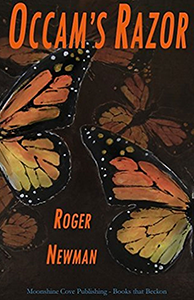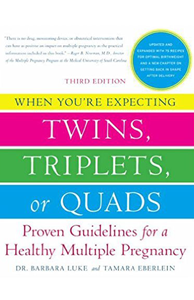The coming thing for fertility enhancement is oocyte cryopreservation for career women in their mid-thirties. Using Oncofertility technologies devised for younger women being treated with chemotherapy and irradiation for breast cancer, leukemia, lymphoma or other gynecology cancers, Fertility specialists are offering busy working women the socially engineered option of freezing their eggs for use at a later, more convenient (but less fertile) time.
Multiple studies have demonstrated that vitrification (freezing eggs) results in about 80% oocyte survival and a fertility rate that approaches 75% using those frozen eggs for in-vitro fertilization (IVF). Additionally, pregnancies resulting from the use of frozen eggs show no increased risk of spontaneous abortion or birth defects. Most importantly, the earlier you freeze your eggs, the better they are.
With the effective development of these reproductive technologies, it was only a matter of time before it would be advertised in the Bloomberg News as a career enhancement option for the business woman on the go. “Freeze your eggs; Free your career.”
Two recent studies from New York University and the University of North Carolina addressed the critical question of “Baby Budgeting.” Both studies yielded similar results. Oocyte cryopreservation at approximately age 35 for women delaying reproduction until at least age 40 can significantly reduce the cost per live birth. Those good folks at UNC actually provide an on-line calculator to help make the right choice about egg freezing.
If you collect and freeze your eggs at age 35 and then use them for in-vitro fertilization at age 40, then the average cost was approximately $39,000 per pregnancy achieved. If you just wait until age 40 to try IVF with your 40 year old eggs, then the average cost would becomes $55,000 per pregnancy. The worst choice would be to freeze your eggs at age 35, but hold them in reserve while you first try fresh IVF at age 40. That would average $61,000 per pregnancy.
The articles explain that the majority of the cost are for the individual IVF cycles themselves. The costs for freezing and egg storage are relatively small. For comparison, the cost of six deviled eggs is only $4.49 at inflated Whole Food prices.
Despite the attractiveness of this approach to no-fuss survival of the species, I wonder if we haven’t thought big enough. Therefore, I would like to humbly posit a modest proposal. “Infanto-cryopreservation.”
This modest proposal would require the expenditure of just one year of maternal work, much earlier in your career (easily covered by accumulated annual and sick leave) and then prolonged freezing of the infant. There would be significant advantages associated with an early pregnancy followed by infanto-cryopreservation compared to delayed childbearing after oocyte-cryopreservation.
First of all, a 5 year Infanto-freeze would give you essentially the same amount of time for career development as does the usual egg freezing protocols. Plus, after the thawing, a further small investment in a nanny, an afterschool program, boarding school and a good out-of-state college can allow you to parlay that initial 5 year Infanto-freeze into twenty plus years of career development. Handled correctly, you might not have to re-engage with the little toddler until he or she has moved back home into the basement after college.
It’s also a huge money saver. Conceiving that baby earlier in the old fashioned way only costs a romantic dinner and a delicious Cabernet, while completely avoiding the steep cost of IVF. As previously mentioned, the actual freezing and storage is the least expensive part of the package. Instead of freezing low-cost oocytes for 5 years, you can freeze your infant for those first five messy, anxiety provoking and expensive newborn, toddler and childhood years. By the time you’re 40 years old and beginning to worry about when to unfreeze your eggs, you could instead be selecting colleges for your once frozen infant with a fully mature 401-K.
Lastly, there is the “bird–in-the-hand” advantage. If your career building egg freeze is successful you might find yourself at age 40 and in line for a CEO or other senior management position. Now you’re really in a bind. There will be tough decisions that will have to be made between the board room and the delivery room. At some point, your hefty, well-deserved year end performance bonuses might become more lucrative than the savings you’ve planned from your fertility protective egg cryopreservation.
If that situation were to occur, wouldn’t it be great to have the luxury of keeping that infant in sub-zero a few more years while you settle into your CEO desk chair?
This blog would not have been possible without the invaluable assistance of Dr. Annie Smith and Dr. Jonathan Swift. While I have been an employee of the Medical University of South Carolina for more than 30 years, this is a personal blog. The opinions expressed are mine and not those of my employer.








Love this
Thanks. I suspect this will probably make someone upset at me but I hope that people will realize it is tongue-in-cheek. The answer is to have more public and business support for women to to have and rear their children before being forced to go back to work. We need European style paid maternity work leave in my opinion…………………..r
Learn from the Europeans? Paid maternity leave, job security, and continued health benefits? I’m afraid that’s just not the American way–if we (USA) didn’t invent it, it doesn’t exist or isn’t worth trying. Love your suggestion, Roger!!
Barbara,
I was going to get into this issue- had a bunch of your stuff on my lap, but couldn’t find a way to merge social commentary with satire. But your point is the real point.See you Thursday. I’ll let you know plans when I get to Atlanta…………………..roger
Enjoyed the read. I would suggest a more forward thinking solution might be to send your little one to a boarding style daycare, perhaps in a different country rich with life experiences, instead of infanto-freezing. This way, instead of thawing a toddler who still needs diaper changes, “attention”, etc…, you could reunite once both of your careers are well established…
Ben, all good suggestions but far more reasonable than I was trying to be!!!
So good!!
Emma,
Glad you enjoyed. You’ll be interested to know that the Occam’s Razor sequel called Two Drifters is due out in May. Working on a third called What Becomes and have introduced a character named Emma Peel that you might recognize. Loved your Christmas letter. Glad everyone is doing so well. Say hello to Charles for me. He also gets a shout out in What Becomes………………….roger